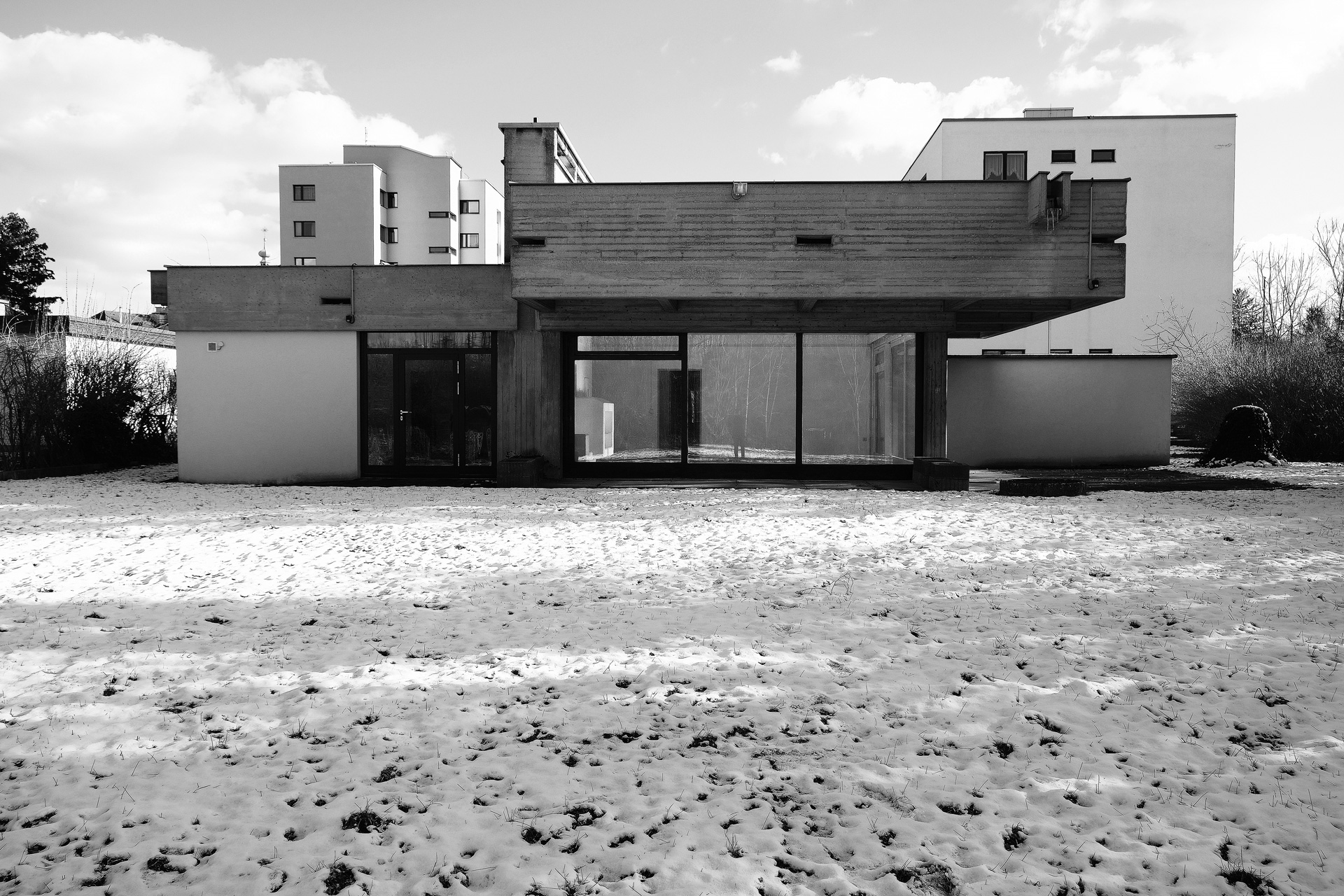06/2021
House Eigner – the examination and subsequent use of a single-family house in Neunkirchen
How can a historical classification and complete documentation of the current state of the house be devised? How could a preservation concept for the building look like?
Philipp Gerhard Westermayer
Diploma in Architecture
E251-2 – Denkmalpflege und Bauen im Bestand
Supervisor: Nott Caviezel
Günther Domenig and Eilfried Huth started their joint creative period with winning the 1964 design competition for the Pedagogical Academy in Graz-Eggenberg. Simultaneously, they designed the House Eigner in Neunkirchen (Fig. 1), based on similar stylistic elements. This building provided one of the first examples of a young Austrian brutalism. In contrast to the Pedagogic Academy, the single-family house is undocumented in the literature. The goals of this thesis include a historical classification of the house in context of the projects by Domenig and Huth that were created at the same time, as well as a complete documentation of the current state of the house, which should represent the basis for a preservation concept and in it an architectural answer to the qualities of brutalism.
As this work attempts to show, brutalism stands for much more than just heavy or even a brutal architectural form. Like no other style before, it combines deeply human approaches, celebrates the displayed supporting structure and by using raw materials embeds this overall composition in a conscious environment. A reinterpretation of brutalism’s qualities should be found in the context of a gentle redensification of this single-family house. The goal is to preserve the original fabric wherever possible, working with the existing structure while restoring the original merits of the building’s first design. The strong axiality should return and be expanded. A structural as well as aesthetic response to brutalism is found in the rammed earth, which is equally raw and celebrates traces of the workers.In summary, the chosen construction method should in equal parts represent a distinction from the existing building fabric and still allow the reversibility of the addition. Clay can decay, but hopefully the brutalist forms of the House Eigner 1969 will not (Fig.3).
References:
Elser, Oliver, Kurz, Philip, Chaola Schmal, Peter. SOS Brutalismus: eine internationale Bestandsaufnahme. Zürich: 2017.
Günther Domenig and Eilfried Huth started their joint creative period with winning the 1964 design competition for the Pedagogical Academy in Graz-Eggenberg. Simultaneously, they designed the House Eigner in Neunkirchen (Fig. 1), based on similar stylistic elements. This building provided one of the first examples of a young Austrian brutalism. In contrast to the Pedagogic Academy, the single-family house is undocumented in the literature. The goals of this thesis include a historical classification of the house in context of the projects by Domenig and Huth that were created at the same time, as well as a complete documentation of the current state of the house, which should represent the basis for a preservation concept and in it an architectural answer to the qualities of brutalism.
As this work attempts to show, brutalism stands for much more than just heavy or even a brutal architectural form. Like no other style before, it combines deeply human approaches, celebrates the displayed supporting structure and by using raw materials embeds this overall composition in a conscious environment. A reinterpretation of brutalism’s qualities should be found in the context of a gentle redensification of this single-family house. The goal is to preserve the original fabric wherever possible, working with the existing structure while restoring the original merits of the building’s first design. The strong axiality should return and be expanded. A structural as well as aesthetic response to brutalism is found in the rammed earth, which is equally raw and celebrates traces of the workers.In summary, the chosen construction method should in equal parts represent a distinction from the existing building fabric and still allow the reversibility of the addition. Clay can decay, but hopefully the brutalist forms of the House Eigner 1969 will not (Fig.3).
References:
Elser, Oliver, Kurz, Philip, Chaola Schmal, Peter. SOS Brutalismus: eine internationale Bestandsaufnahme. Zürich: 2017.
Diploma in Architecture
E251-2 – Denkmalpflege und Bauen im Bestand
Supervisor: Nott Caviezel
